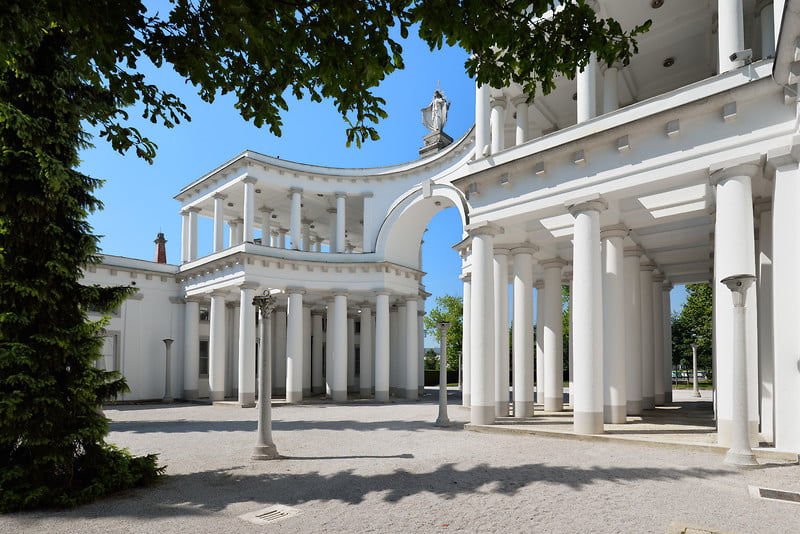The municipality of Ljubljana has announced a public call for the reconstruction of the Plečnik Auditorium
The municipality of Ljubljana has announced a public call for the reconstruction of the Plečnik Auditorium, the former open-air amphitheatre in a clearing behind Tivoli Mansion in Ljubljana’s Tivoli Park. It was designed by architect Jože Plečnik (1872-1957) and constructed in 1933, but left to decay after the Second World War.
In Plečnik’s design, a wooden grandstand was placed to the west of the clearing behind Tivoli Mansion, where the terrain naturally rises, while a gravel stage overlooked Ljubljana. Above the wooden stands stood a fountain, which was later moved to a different location, next to the Ljubljanica River.
After the Second World War, the amphitheatre was left to decay. Until the mid-1960s, the area was used to host an open-air summer cinema, which was subsequently abandoned and the site was overgrown. The clearing is now surrounded by tall trees and is a protected plant habitat.

However, when the Švicarija arts centre in Tivoli was renovated a few years ago, the idea of reviving the amphitheatre was born as well. According to the plans drawn up by the architectural firm Medprostor, the wooden grandstand will be rebuilt on a steel structure, to its former extent and in its former location, with the trees and vegetation adjacent to the clearing to be fully preserved.

The stage of the reconstructed open-air theatre will be covered with grass, and the whole area will be linked with the Švicarija arts centre and Tivoli Mansion, the newspaper Dnevnik has reported. “When planning the reconstruction, we felt it was important not to introduce new original elements, but simply to bring in modernity and also to be true to the original,” said Rok Žnidaršič, the architectural project manager from Medprostor.

According to Dnevnik, Žnidaršič added that although the project followed the form and concept of Plečnik’s design, it is not a “replica of the lost architectural spatial development, but rather an interpretation of it.”
You can see the details of the public tender (in Slovene) here

















